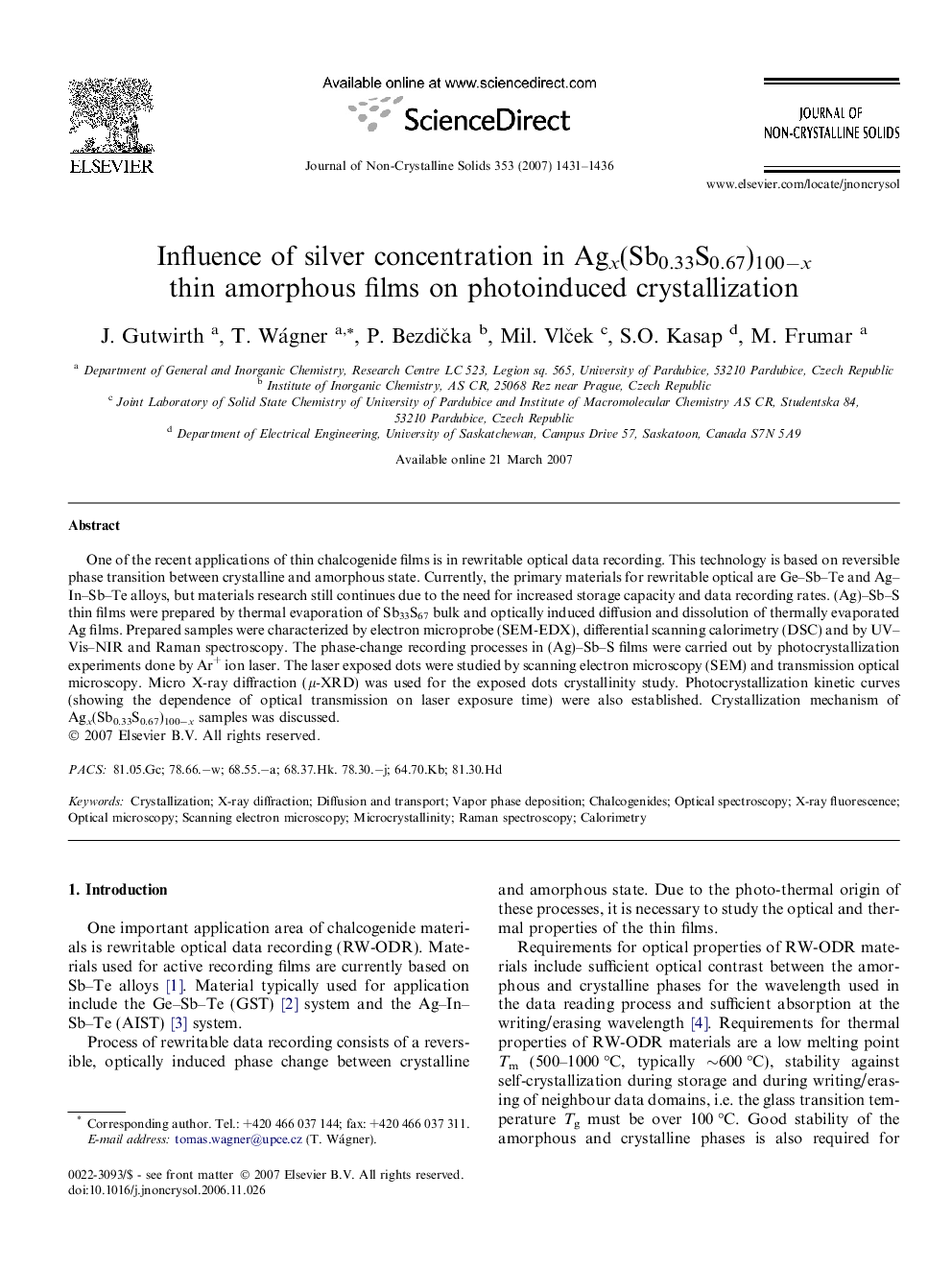| Article ID | Journal | Published Year | Pages | File Type |
|---|---|---|---|---|
| 1485674 | Journal of Non-Crystalline Solids | 2007 | 6 Pages |
Abstract
One of the recent applications of thin chalcogenide films is in rewritable optical data recording. This technology is based on reversible phase transition between crystalline and amorphous state. Currently, the primary materials for rewritable optical are Ge-Sb-Te and Ag-In-Sb-Te alloys, but materials research still continues due to the need for increased storage capacity and data recording rates. (Ag)-Sb-S thin films were prepared by thermal evaporation of Sb33S67 bulk and optically induced diffusion and dissolution of thermally evaporated Ag films. Prepared samples were characterized by electron microprobe (SEM-EDX), differential scanning calorimetry (DSC) and by UV-Vis-NIR and Raman spectroscopy. The phase-change recording processes in (Ag)-Sb-S films were carried out by photocrystallization experiments done by Ar+ ion laser. The laser exposed dots were studied by scanning electron microscopy (SEM) and transmission optical microscopy. Micro X-ray diffraction (μ-XRD) was used for the exposed dots crystallinity study. Photocrystallization kinetic curves (showing the dependence of optical transmission on laser exposure time) were also established. Crystallization mechanism of Agx(Sb0.33S0.67)100âx samples was discussed.
Keywords
Related Topics
Physical Sciences and Engineering
Materials Science
Ceramics and Composites
Authors
J. Gutwirth, T. Wágner, P. BezdiÄka, Mil. VlÄek, S.O. Kasap, M. Frumar,
